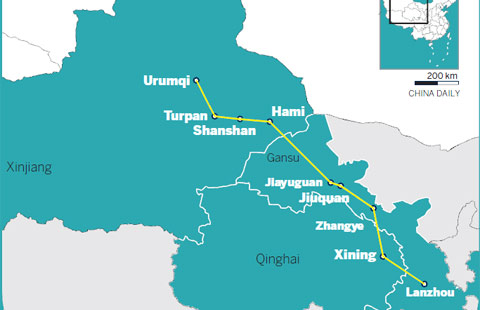Navy determined to protect China's interest
By Pu Zhendong in Beijing and Zhao Shengnan in Qingdao, Shandong (chinadaily.com.cn) Updated: 2014-04-25 17:00The recently approved guidelines for unplanned encounters at sea, as a set of multilateral technical procedures, should not be deliberately used to prevent China from safeguarding its maritime rights, senior Chinese military officers said on Thursday.
Ding Yiping, deputy commander of the Chinese navy, said it is wrong that some countries intend to misinterpret and take advantage of the code to set barriers for the Chinese navy from protecting its maritime interest in the East and South China Seas.
"The Chinese navy is firmly determined to safeguard our territorial integrity, maritime rights and security," Ding said at a news conference.
On Tuesday, naval chiefs approved the Code for Unplanned Encounters at Sea during the Western Pacific Naval Symposium in Qingdao, Shandong province.
On the same day, Japanese Defense Minister Itsunori Onodera welcomed the code and called for a broader marine crisis management mechanism between the two defense ministries, claiming that a Chinese navy vessel had "locked its fire-control radar" on a Japanese destroyer in the East China Sea in January 2013.
Ding called the accusation unprofessional speculation, and said the code does not include details on the fire-control radar, Phoenix TV reported.
Xu Qiyu, a researcher at the National Defense University of the People's Liberation Army, said Japan is hyping the nonexistent incident to increase criticism of China.
"The code is made up with general principles to reduce miscalculations. No specific rule about fire-control radar is included," Xu said.
Li Jie, a senior professor at the Naval Military Studies Research Institute of the People's Liberation Army, said the code, facilitated in a multilateral framework, is not targeted at solving disputes between China and Japan.
"All countries in the region should abide by the rules to avoid misfire instead of stirring trouble," Li said.
Based on international legal and navigation principles, the code provides participants with a tactical maneuvering and signal manual to reduce interference and uncertainties during naval ship and aircraft encounters.
Ding said the connotation of the code lies in how to communicate when two vessels meet, how to understand each other's intentions and how to maneuver to avoid miscalculation.
Ding said the Chinese navy will take the lead to carry out the regulations in detail and train relevant personnel.
"It was approved by all parties and should be complied with by all parties," he said.
Hailing the code as "positive to regional stability" on Thursday, Defense Ministry Spokesman Yang Yujun said that it also prescribed its own legal status and scope of application.
"It is important to note that the relevant side should not willfully distort or selectively interpret the code, since it is a set of technical rules within a multilateral framework," Yang said at the ministry's monthly news conference.
The US Defense Department on Wednesday also hailed the code as a positive development that should "help reduce the risk of misunderstandings between navy vessels and aircraft operating in a region".
Calling it "a great step toward improving operational safety at sea", Pentagon spokesman Steven Warren said the United States fully support efforts to standardize maritime conduct.
"The guidelines demonstrate the effectiveness of dialogue, transparency and multilateral approaches to dealing with 21st-century challenges," he added.
In December, a US guided-missile cruiser almost collided with a Chinese warship maneuvering nearby in Chinese territorial waters of the South China Sea. The two vessels were reportedly less than 500 meters from each other.
Xinhua contributed to the story.
- Indonesian navy visits China's submarine academy
- Pakistan Navy ship reaches China for exercise
- No one-on-one meeting between Chinese navy commander, Japanese MSDF officials: Spokesman
- 4th US Navy official charged in bribery scheme
- US Navy to join search for passengers missing from ferry
- Navy warships' 'Open Day' activities spur public zeal
- More female officials caught in corruption
- Whampoa veterans recorded with glory
- Police bust 9 terrorist groups in Xinjiang
- Knife-wielding attackers seized in Xinjiang
- New regulation leads to drop in petitioned cases
- Hunan plant shut as probe into lead poisoning begins
- Police boost efforts to combat gambling
- Project offers jobs openings to legal experts
- Experts: Dog meat festival 'illegal'
- Nation looks to upgrade
pipeline networks






